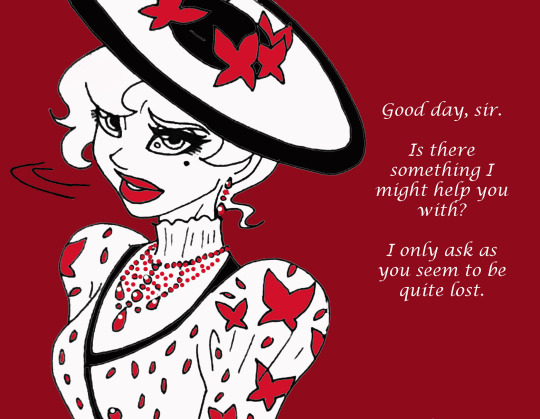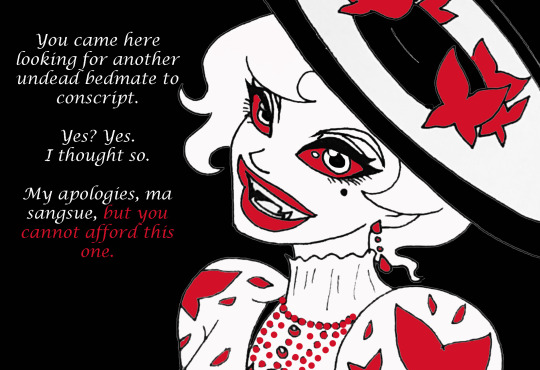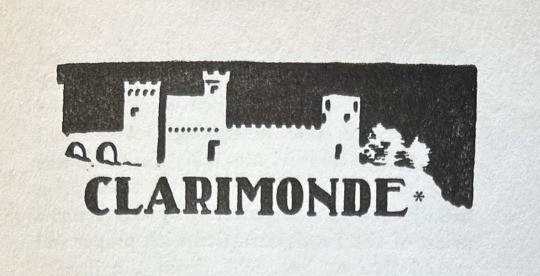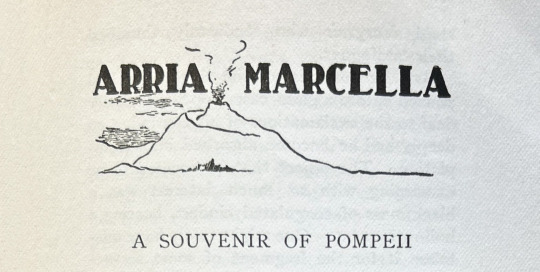#Theophile Gautier
Text

To love is to admire with the heart; to admire is to love with the mind.
-- Theophile Gautier
229 notes
·
View notes
Text
The world does not want me; it rejects me like a ghost escaped from the tombs; I am almost as pale: my blood refuses to believe that I am alive, and it will not colour my skin; it drags itself slowly through my veins, like stagnant water in choked-up canals.
Mademoiselle de Maupin, Théophile Gautier, 1835
105 notes
·
View notes
Quote
I wish that something would happen to me, some strange, unexpected adventure — everything has become indifferent to me, everything is insupportable to me.
Théophile Gautier, “One of Cleopatra's Nights” (1838)
#that sounds like a you problem cleo#you know what's a real problem? me trying to find a decent translation of gautier’s tortunio#i could just pick up an old french copy and see what happens#but is my french THAAAAAT good?#non#non.#[cries into my penguin edition of mademoiselle de maupin]#theophile gautier#literature
452 notes
·
View notes
Text
The Pretty Girl in Piccadilly




In which I have my own theory about why we never hear another word about this particular prey again in the book. Can’t have another victim pop up in the Count’s to-do list when she’s been dead a good long while to begin with. Especially when it’s this gal.
Dracula came, Dracula saw, Dracula pursued, Dracula got roasted halfway back to the grave for the rest of the day when he discovered he was not only not the only vampire abroad in England, but that Clarimonde, freshly resurrected undead Parisian party queen of Gautier’s tale (which predates Stoker’s novel by an age, being printed in France in 1836), has no patience for pushy wannabe blood sugar daddies. Rest in pieces, Count.
You can read Clarimonde’s story, “La Morte Amoureuse,” (”The Dead Woman in Love” or “Clarimonde” in English translation) by Théophile Gautier for free on Project Gutenberg here.
#just because you're a vampiric hedonist doesn't mean you have to be a dick about it COUNT#Clarimonde is proof positive of that#beloved bloodsucking party girl of my heart#clarimonde#la morte amoureuse#the dead woman in love#theophile gautier#dracula#dracula daily#bram stoker#pretty girl in piccadilly
322 notes
·
View notes
Photo








Publishers’ Binding Thursday
The best way I’ve found to find the lovely publishers’ bindings in our collection is to simply go looking for them in the stacks. Most are not identified as having publishers’ bindings in their records, and many have designs that are uncredited; so while some publishers’ binding designers like Margaret Armstrong are well-known and credited for their work, many remain unknown and unremembered. But their work is not unappreciated!
This floral publishers’ binding for One of Cleopatra’s Nights is one of those designed by an unnamed designer. However, we love the flowing design with golden irises on the left side of the cover, perhaps representing the Nile? The book also features little illustrative headpieces at the beginning of each story. This edition was published in 1906 by Brentano’s, a bookstore chain and briefly a publishing house based in New York City.
The text is a group of short stories written by Théophile Gautier (1811-1872), a French author who wrote plays, stories, poems, and was also a journalist and art, theater, literature, and ballet critic. Gautier was well-respected as a critic but also as an author in his own right, with fans like Balzac, Baudelaire, Flaubert, Pound, Eliot, Proust and Wilde. Gautier was also well-known for his fashion, and famously wore a scarlet waistcoat. The book’s translator, Lafcadio Hearn, also had a very interesting life.
View more Publishers’ Binding Thursday posts.
-- Alice, Special Collections Department Manager
#Publishers' Binding Thursday#Theophile Gautier#One of Cleopatra's Nights#Brentano's#publishers' bindings#irises#flowers#floral patterns#Lafcadio Hearn
94 notes
·
View notes
Text

Je crois qu'il va pleuvoir : - la bise ouvre ses flancs,
Et par la déchirure il sort des éclairs blancs.
T. Gautier
19 notes
·
View notes
Photo

Portrait of Carlotta Grisi in Giselle, 1841 by Theophile Gautier (1841, pastel)
#art#artwork#kunstwerk#kunst#theophile gautier#carlotta grisi#giselle#portrait#fairy#fee#dancing#tanzen#wings#flügel#mythical art#mystische kunst#mythical creature#mystische kreatur#woman#frau#flowers#blumen#ballet
10 notes
·
View notes
Text

(This one's brought to you notably by Christabel, Fleur-de-Lys, Carathis, Immalee, Clarimonde, Ulalume, Nisida and Mircalla)
#gothic literature#20th century literature#edgar allan poe#samuel taylor coleridge#sheridan le fanu#victor hugo#theophile gautier#cathy and the abbey
5 notes
·
View notes
Text

Foreign fantasy: Gothic and Romantic eras
This chart of fantastic fiction written in languages other than English from the 1770s to the 1870s is a sort of companion to my earlier list of Gothic romances. For more titles and links to Goodreads and Wikipedia, see the full version of this list on my website.
#book recommendations#book recs#book list#gothic#gothic romance#gothic novel#horror literature#weird fiction#gothic fiction#horror fiction#fantastique#e.t.a. hoffmann#theophile gautier#honore de balzac#nikolai gogol#comte de lautréamont#jan potocki#book reccs#reading list#literature#classic books#classic literature
45 notes
·
View notes
Text

So I found out that this caricature of Théophile Gautier with the looooong hair is by Benjamin Roubaud, the same artist who caricatured Gavarni for Le Charivari. The Gavarni caricature is useful because it gives some idea of his appearance in a way that definitely doesn't flatter him. q.v. a group of five works by Benjamin Roubaud sold at auction.

Mister Roubaud you are MEAN!
#Eighteen-Thirties Thursday#1830s#benjamin roubaud#le charivari#paul gavarni#théophile gautier#theophile gautier#caricature#anyway gavarni still looks good#that waist omg#mister gavarni what is your beauty routine#i have shared the gautier picture on twitter before
34 notes
·
View notes
Text
(…) Petrus, éventrant le paquet, en tira une chevelure, la roula sous son pouce couleur d’or bruni dans la petite feuille de papel de hilo, l’alluma à la chandelle plantée dans une bouteille vide, et la porta à ses lèvres avec une visible expression de plaisir bien rare sur sa figure stoïque. Ses grands yeux hispano-arabes brillèrent un instant, une légère rougeur se répandit sous le tissu olivâtre de sa peau, des jets de fumée blanche lui sortirent alternativement des lèvres et des narines, et bientôt il disparut à demi dans le vaporeux tourbillon, pareil à Jupiter assembleur de nuages.
Théophile Gautier, Histoire du Romantisme
#well this is just#… very nice#just basking in his beauty and pleasure#french romantics#theophile gautier#petrus borel#reference
20 notes
·
View notes
Photo

J’avais dans l’âme une passion qui devait me dévorer et qui se révèle aujourd’hui pour la première fois.
- Théophile Gautier, Spirite
#quote#sensuality#femme#beauty#courtship#mystery#relationships#amour#passion#theophile gautier#gautier
46 notes
·
View notes
Text

I posted a review of this book on yt . btw
#ive been reading since obvs but it takes real inspiration to talk abt it on camera lol#theophile gautier#m
45 notes
·
View notes
Text
I have no idea how much people from other countries know French lit, but I'd like you all to know that one of the people on this list is a woman.
I'm considering making a second poll, but I need a few more names.
I also have another Romanticism poll (mostly UK centred) here.
And here's my pinned post with more polls about art, literature, comics, etc.
#polls#french literature#romanticism#gerard de nerval#francois rene de chateaubriand#victor hugo#alfred de musset#alfred de vigny#george sand#prosper merimee#theophile gautier#alphonse de lamartine
28 notes
·
View notes
Text
Clarimonde, the Parisian Party Vampire You Never Read About
Quick, without touching Google, what gothic vampire tale came before Dracula, had a first-person narrator, involved a romantic/sensual undertone between the vampire and the victim, and some knowledgeable older man who revealed the nature of said vampire?
Did you guess Sheridan le Fanu’s, “Carmilla?” You’re close! The lesbian vampire escapade did predate (and surely influence) Bram Stoker’s Dracula. Carmilla went around nibbling her girlfriends in 1872 while the Count started his bloody spree in 1897. But before both of them we had the French short story, “La Morte Amoureuse,” (The Dead Woman in Love) by Théophile Gautier, translated into English alternately as, “Clarimonde,” “The Dead Leman,” or simply, “The Vampire.” But our girl Clarimonde often doesn’t get her Ye Olde Classic Bloodsucker badge as she’s owed, because her English translation only came out in 1908. But her original publication year was a dusty old 1836.
So. Who is Clarimonde? Clarimonde is, in essence, the most fun way to die and/or join the undead you could ask for in any era. Without giving everything away, she and her story, as narrated by the now-elderly priest she once seduced, are one of the most startlingly religion-risqué pieces of work ever dared in the 19th century. Hell, it would push some buttons today.
The gist for Clarimonde’s character is that she’s a beautiful prince’s consort with her own gifted castle to throw lavish bacchanals in. Her traits reveal she’s seemingly psychic, possibly Fae, and a combo of vampire and succubus. She sets her sights on the priest, Romuald, when he’s a handsome and earnest young man just about to undertake his final rites and become an official priest. Their eyes lock, minds connect, and bam, instant fairy tale Love at First Sight. Romuald doesn’t shy away from describing his adoration of her beauty, but also his pining for the potential of genuine romance with a soulmate; the fulfilling life and family he’s just now realizing he’s throwing away for the priesthood.
This undercurrent of bitterness, doubt, and disappointment with the austere nature of a clergyman’s life follows him from that moment onward. Even the old abbé who suspects what foul female evil is afoot can’t soothe him by saying, ‘hey, just pray about it.’ In fact, in all the old abbé’s appearances, Gautier/the Narrator Priest manages to sneak in a lot of stealthy “Young Goodman Brown”-esque hypocrisy. Like when the old abbé scoffs and sneers about Clarimonde’s latest bawdy party and all that went on in it…
(What were you doing at Clarimonde’s revelry, sir? Or are you just parroting bullshit you don’t actually know about??)
The love story between Clarimonde and Romuald is split between the priest’s increasingly exhausted daylit hours, while his dreaming self (if it is just a dream?) seems to run away to live with Clarimonde where they indulge in all the joys and heady vices they feel like, but each other most of all. It’s all as raunchy in its detail as was allowed at the time, but made more so for the fact that Romuald—who is, again, a priest—revels in the memory. Any shame is vaporous if it’s there at all. And then, blood comes into it.
Clarimonde (in the dream) takes to pricking him with a needle so she may keep herself alive on less than a thimble of blood. Romuald declares he would have given her all his veins if she’d asked. Clarimonde likely knows so. But no. Just a drop.
I’ll leave the exact details of the climax murky. But the last lines…
I returned to my presbytery, and the noble Lord Romuald, the lover of Clarimonde, separated himself from the poor priest with whom he had kept such strange company so long. But once only, the following night, I saw Clarimonde. She said to me, as she had said the first time at the portals of the church: ‘Unhappy man! Unhappy man! What hast thou done? Wherefore have hearkened to that imbecile priest? Wert thou not happy? And what harm had I ever done thee that thou shouldst violate my poor tomb, and lay bare the miseries of my nothingness? All communication between our souls and our bodies is henceforth forever broken. Adieu! Thou wilt yet regret me!’ She vanished in air as smoke, and I never saw her more.
Alas! she spoke truly indeed. I have regretted her more than once, and I regret her still. My soul’s peace has been very dearly bought. The love of God was not too much to replace such a love as hers. And this, brother, is the story of my youth. Never gaze upon a woman, and walk abroad only with eyes ever fixed upon the ground; for however chaste and watchful one may be, the error of a single moment is enough to make one lose eternity.
From. A. Priest.
A priest, so old and grey and—we can almost hear—choking with a young man’s mourning tears over the loss of a woman who in any other context would be painted as a vile Lilith archetype, a sexy-evil demoness embodying the temptation of the Devil (a ploy the old abbé uses, of course). Romuald only let the ‘separation’ happen for the sake of clarity in the end—his brain was being sawed in half by the waking VS sleeping worlds he lived in. That and lack of coherent thought are likely all that allowed [REDACTED] to happen, and that with him utterly miserable once the work was done.
It all plays out less like a horror story and more like a romantic tragedy wrapped in commentary so cutting against the stringent dogma of the Church you’d think it was a modern-day subversion of an older story. But no. Gautier churned this thing out, again, in 1836. “La Morte Amoureuse,”/ “Clarimonde” is free to read on Project Gutenberg and I sincerely recommend giving it a look if you want a taste of one of the earliest depictions of vampires (or any monster) as something other than the 110% Evil Demonic Threat Here to Sully Your Virtuous Soul with Impure Goings-On, and something almost Guillermo del Toroish in the daringly loving greys it plays with.
tl;dr: Clarimonde deserves more love and her own turn in the classic vampire spotlight. In the meantime, she’ll go on partying into the night and breaking hearts.
#tagging this as#dracula daily#because everybody's in a mood for some classic vampire lit to chew on while Dracula snacks his way through the Demeter#please go read about my girl Clarimonde#she deserves more love#she's one of the only raucous and unabashedly fun babes in classic literature who really gets away with being herself#even post-dramatic breakup#if only because the narrative paints her as flawed--but explicitly Not Evil#just not the norm and with only a vampire's method of engaging in a relationship with a mortal paramour#anyway#Clarimonde#La Morte Amoureuse#vampire#horror#love#dracula#carmilla#theophile gautier#literature
375 notes
·
View notes
Text


Mademoiselle de Maupin (1835)
#mademoiselle de maupin#theophile gautier#d’albert my disastrous dythyrambic drama queen 😭😭😭😭#i hate him and love him sm i mean LOOK AT THIS#best coming out speech/letter/whatever of all time#actually wait no it’s the joint best#alongside theodore’s iconic one later in the book#📢 MA CHIMÈRE SERAIT D'AVOIR TOUR À TOUR LES DEUX SEXES POUR SATISFAIRE À CETTE DOUBLE NATURE: HOMME AUJOURD’HUI FEMME DEMAIN 📢#french literature#books#queer literature#ellis reads#frickin adore this book#tumblr user serannes comeback whennnn
53 notes
·
View notes